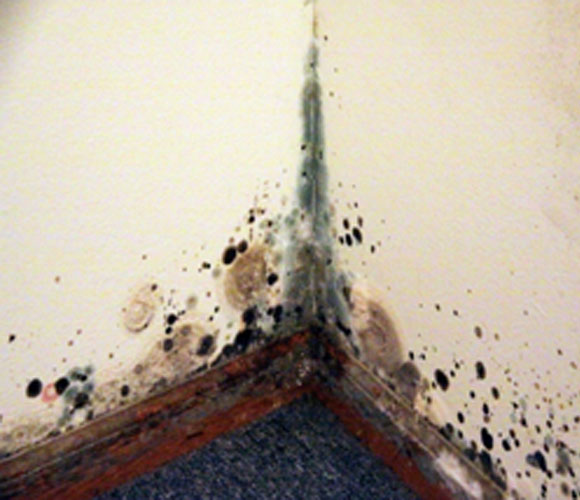Common Problem: Allergens

Their allergy symptoms included problems like
- Difficulty breathing inside the home
- the need to take allergy medication on a daily basis, year round
- sneezing
- itching
- runny nose
- congestion
- dry and scaling skin
There is no cure for allergies. But you can reduce your allergy symptoms by avoiding contact with the mold spores. Mold and mildew are fungi. They are different from plants or animals in how they reproduce and grow. The “seeds,” called spores, travel through the air. Some spores spread in dry, windy weather. Others spread with the fog or dew when humidity is high.

Inhaling the spores causes allergic reactions in many people. Fungi and mold grow in many places, both indoors and outside, so allergic reactions can occur year-round. Rarely, some patients can have a more serious illness called allergic bronchopulmonary aspergillosis. In this condition, there is both an allergic and an inflammatory response to the mold. Symptoms may include severe wheezing, coughing and shortness of breath, much like asthma.The Asthma and Allergy Foundation of America has a wide variety of suggestions for dealing with mold in a home and almost all of them, in one way or another, deal with moisture control. Their website say emphatically, “Be aggressive about reducing dampness.” A damp, unencapsulated crawl space is the ideal breeding ground for mold. Molds need a dark, damp area to flourish and an unencapsulated crawl space is the perfect environment. Mold needs moisture to grow.
The solution is clear. Drying out the crawlspace will stop mold growth and make it go dormant. Treatment of mold in your crawl space with a Benefector a Mold-X solution will kill the existing mold and a crawlspace encapsulation will prevent new mold from growing.

Mold growth is not only be harmful to the structure of the home, but it can also be dangerous to those living within the home. To grow, mold needs a cool damp place, moisture, and organic material such as the wood structure or the flooring above. As part of their life cycle, mold produces mold spores which are expelled into the air.Mold spores are like seeds with a very thick outer wall which can survive extreme environmental conditions and germinate when the conditions growth are met. The mold that is growing I the crawl space is also releasing mold spores into the air.
Fifty percent of the air you breathe originates in crawl space.Mold can be very dangerous to homeowners and their families all sorts of causing health issues. Mold creates breathing problems within the home, call for the use of allergy medicine on a daily basis, and make a home uncomfortable. If the mold goes untreated, it could cause severe allergy attacks or make someone seriously ill.

To treat the problem and to prevent further mold growth, the crawl space must will have to be dried out so that the mold will go dormant. Any wet or ruined insulation will have to be removed from the crawl space, then sump pumps and dehumidifiers will have to be installed as well as a vapor barrier and vent covers.This will encapsulate the crawl space, completely isolating it from the outside environment and allow the climate inside to be monitored. The old mold can be treated and killed with Mold X and the encapsulation will prevent new mold from growing.
Mold is a health risk for homeowners and their families. It creates uncomfortable living conditions within a home. Mold can also cause structural issues for the home by promoting wood rot.
Moisture in a crawl space is a major factor contributing to mold growth and encapsulation the best way – maybe the only way – to treat and prevent future mold growth.
